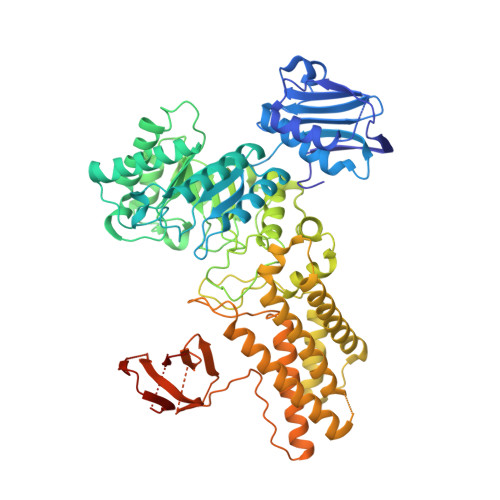Inhibition of a Bacterial O-Glcnacase Homologue by Lactone and Lactam Derivatives: Structural, Kinetic and Thermodynamic Analyses.
He, Y., Bubb, A.K., Stubbs, K.A., Gloster, T.M., Davies, G.J.(2011) Amino Acids 40: 829
- PubMed: 20689974
- DOI: https://doi.org/10.1007/s00726-010-0700-6
- Primary Citation of Related Structures:
2XM1, 2XM2 - PubMed Abstract:
The dynamic, intracellular, O-GlcNAc modification is of continuing interest and one whose study through targeted "chemical genetics" approaches is set to increase. Of particular importance is the inhibition of the O-GlcNAc hydrolase, O-GlcNAcase (OGA), since this provides a route to elevate cellular O-GlcNAc levels, and subsequent phenotypic evaluation. Such a small molecule approach complements other methods and potentially avoids changes in protein-protein interactions that manifest themselves in molecular biological approaches to O-GlcNAc transferase knockout or over-expression. Here we describe the kinetic, thermodynamic and three-dimensional structural analysis of a bacterial OGA analogue from Bacteroides thetaiotaomicron, BtGH84, in complex with a lactone oxime (LOGNAc) and a lactam form of N-acetylglucosamine and compare their binding signatures with that of the more potent inhibitor O-(2-acetamido-2-deoxy-D-glucopyranosylidene)amino N-phenyl carbamate (PUGNAc). We show that both LOGNAc and the N-acetyl gluconolactam are significantly poorer inhibitors than PUGNAc, which may reflect poorer mimicry of transition state geometry and steric clashes with the enzyme upon binding; drawbacks that the phenyl carbamate adornment of PUGNAc helps mitigate. Implications for the design of future generations of inhibitors are discussed.
Organizational Affiliation:
York Structural Biology Laboratory, Department of Chemistry, The University of York, York, UK.
















